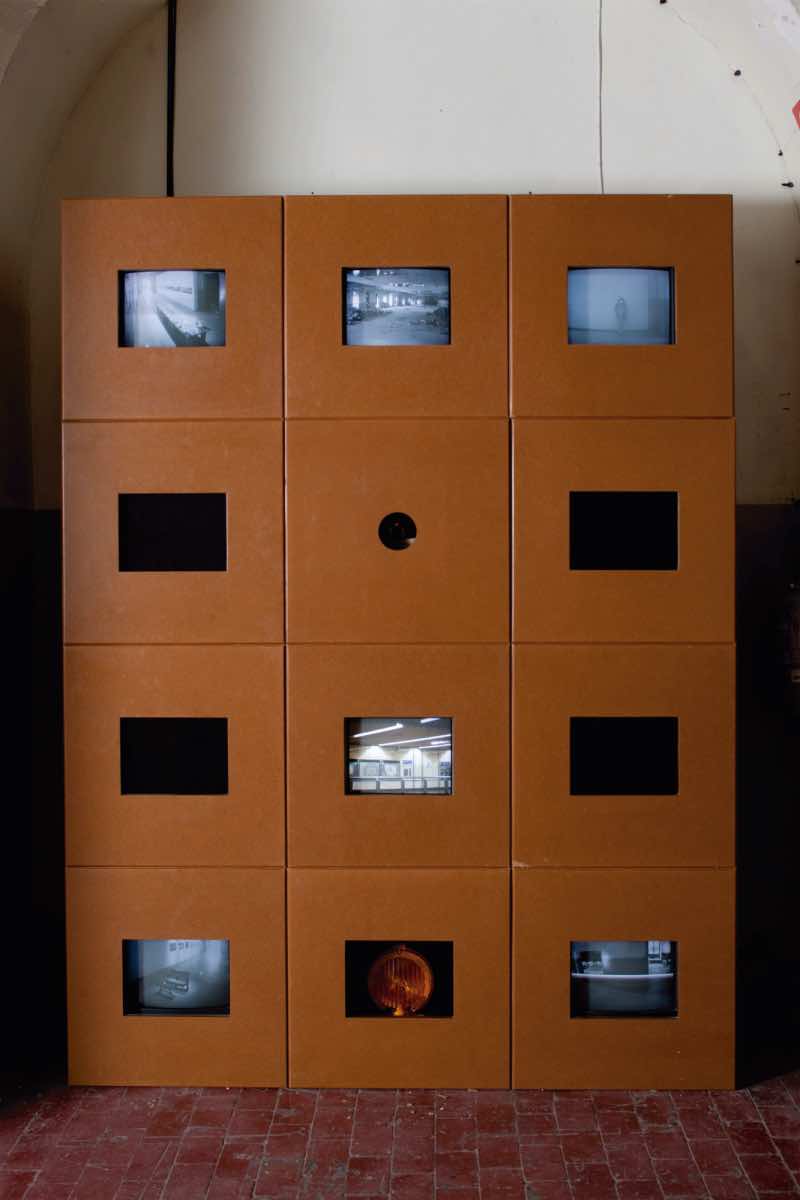
Esta pieza invita a la reflexión sobre la perdida de privacidad en los espacios públicos vigilados por cámaras de seguridad. Se señala con ello la pérdida progresiva de la distinción entre espacios públicos y privados propia de nuestra época.
Como tema de debate y cuestionamiento, lo es no sólo sobre lo democrático de las prácticas de vigilancia sino acerca de las estructuras de análisis y control de la realidad -¿quién vigila al vigilante?- y de la noción de interactividad que la instalación original abordaba. Por otro lado, la obra como pieza yuxtapone en sus monitores la vision, capturada por cámaras de seguridad, de algunos otros espacios adyacentes, propiniendo con ello una interferencia con dichos espacios y las obras en ellos expuestas. Como ejemplo, se incorpora aquí un video que recoge acciones de los autores en lugares no visitables del edificio de Tabacalera.
La primera versión de esa obra se realizó en 1997 como encargo del Festival Ars Electronica de Linz.
La obra en su conjunto pone también en evidencia la inocencia de los sistemas de hace veinte años frente a la mutación sufrida por de los dispositivos de seguridad y vigilancia informática actuales, sistemas inteligentes e invisibles que ya no requieren de una cámara para controlar a la ciudadanía.
The video documentary Polyphemus´ Eye (1997) reflects this disparity of opinions in interviews with anonymous citizens in Madrid, Paris and Vienna. Their testimony is included in the current interactive installation El Ojo de Polifemo (1997-2015) which is made up of fifteen modules, six of which incorporate television monitors. One of these shows the recorded interviews and four of them transmit images from video surveillance cameras; the first is situated in one of the modules in such a way that spectators see themselves on one of the monitors as they observe the installation. The others are located in other rooms of the exhibition space. A sixth monitor transmits pre-recorded images of the artists carrying out actions in other areas of the Tabacalera factory, insinuating that their performances are also being controlled by the art system itself, including the general public and the institutions that represent it.
Polyphemus’ Eye by Jerez and Iges also highlights the fact that both the concept and the function of video and Internet cameras have changed from when they were a democratising medium of civic communication and participation – defended by culture – to become instruments of the integrated surveillance of citizens transformed, in their turn, into submissive collaborators with a system of control and security supported by both markets and states.
http://expandedradio.net/1997-polyphemus-eye-dvd/
http://expandedradio.net/1998-el-ojo-de-polifemo-intermedia-piece/

